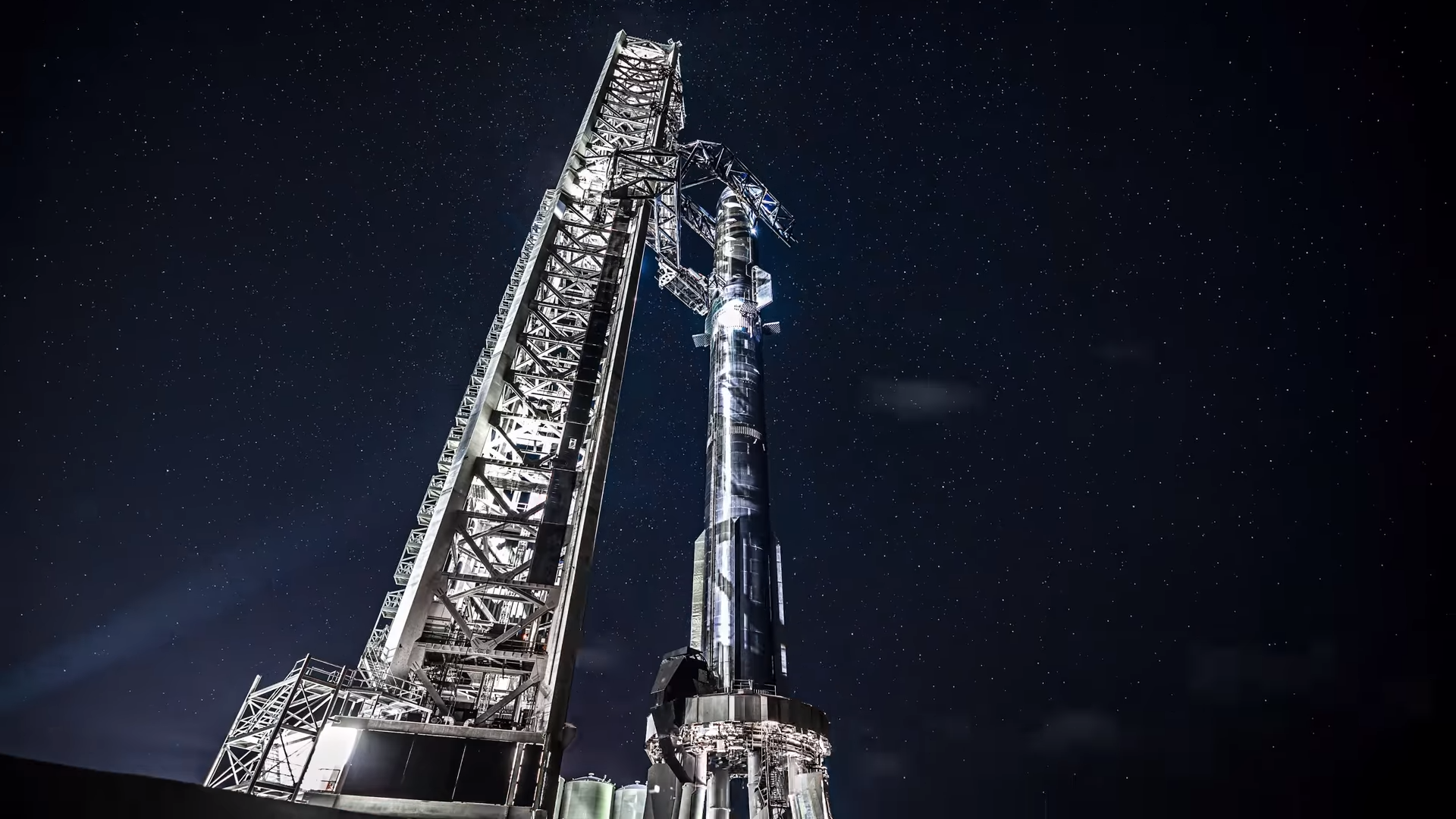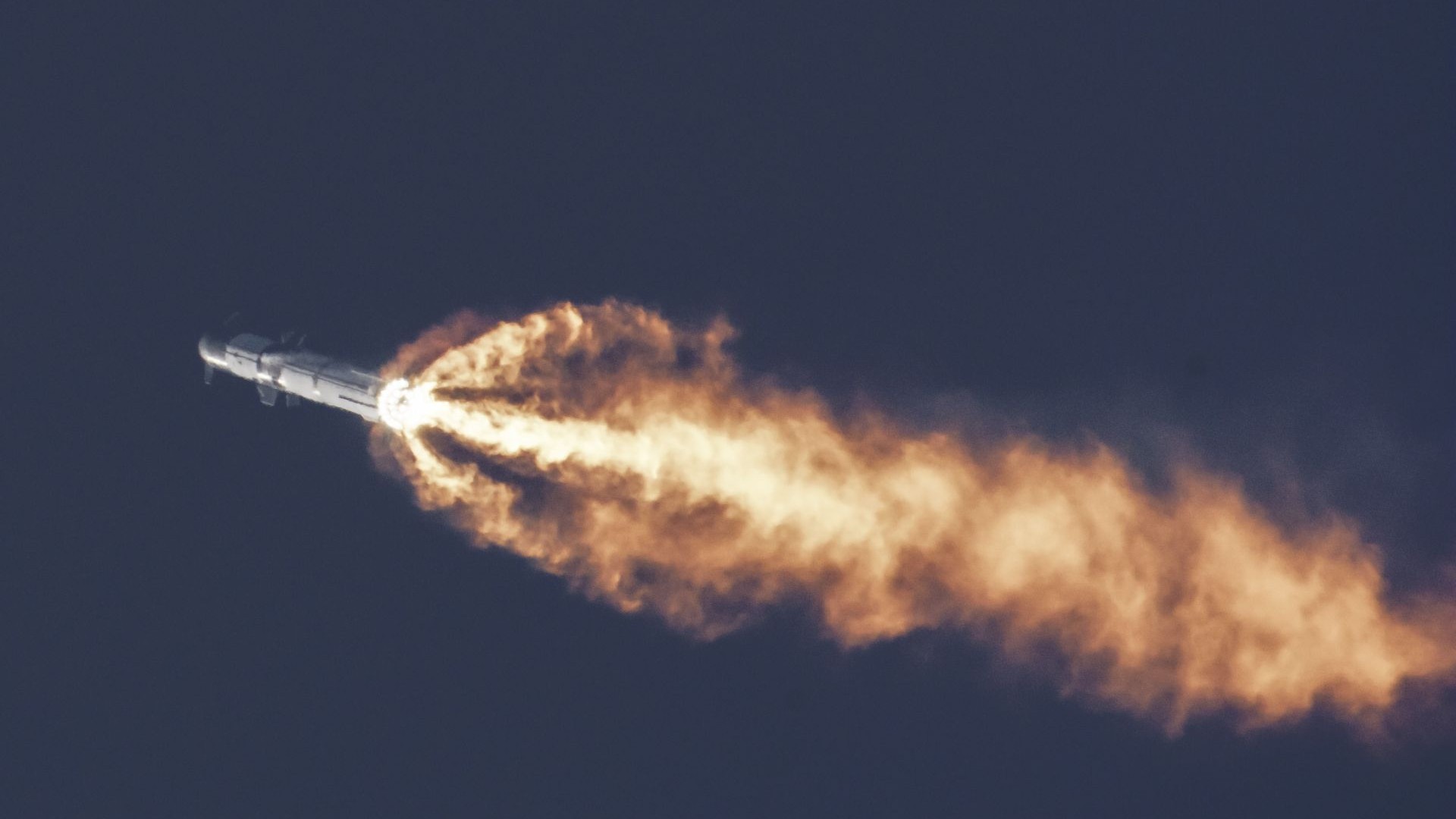SpaceX says its 2nd Starship test flight could launch on Nov. 17 (video)
"Assuming regulatory approval," SpaceX CEO Elon Musk says.
SpaceX's next Starship test launch could lift off as early as Nov. 17, pending regulatory approval from the Federal Aviation Administration and other agencies.
The potential launch from SpaceX's Starbase test site at Boca Chica Beach near Brownsville, Texas will mark the company's second test flight of an orbital class Starship and Super Heavy booster — the largest and most powerful rocket ever built. SpaceX launched its first Starship test flight in April, but it exploded shortly after liftoff.
"Starship preparing to launch as early as November 17, pending final regulatory approval," SpaceX wrote on X, formerly known as Twitter, late Friday (Nov. 10).
Related: Watching SpaceX launch Starship, the world's largest rocket, was simply unreal (video)

SpaceX CEO Elon Musk added that whether or not Starship launches this month hinges on government approval for the test flight.
"Assuming regulatory approval," Musk wrote on X in response to SpaceX's announcement.
The Starship and Super Heavy launch system is the world's tallest and most powerful rocket. It stands nearly 400 feet tall (121 meters), has a touted lift capacity of 165 tons (150 metric tons) and is designed to be fully reusable. SpaceX aims to use Starship as a workhorse heavy-lift launcher, as well as for deep space missions and has already sold flights around the moon to space tourists. NASA also plans to use the Starship rocket to land Artemis 3 astronauts on the moon.
Get the Space.com Newsletter
Breaking space news, the latest updates on rocket launches, skywatching events and more!
But first, Starship and its booster must prove they are ready for orbital flight. That's where the upcoming test flight comes in.
Related: Incredible photos of SpaceX's 1st Starship launch
SpaceX launched its first full Starship test flight on April 20, but the rocket suffered a stage separation failure, the loss of several of its 33 first-stage Raptor engines and other issues. As a result, SpaceX intentionally detonated the rocket over the Gulf of Mexico a few minutes after liftoff.
For the upcoming test flight, SpaceX has modified the stage separation process to use a new hot-staging process in which the upper stage will fire its engines while still attached to its Super Heavy first stage. SpaceX engineers have developed a new vent system for that process as well, which the company showed off in a new video shared on X and YouTube.
The second flight will likely follow the same plan as the first test, with SpaceX launching toward a target splashdown site off the coast of Hawaii to test reentry and landing techniques, while the Super Heavy booster makes a splashdown in the Gulf of Mexico.
"Starship's first flight test provided numerous lessons learned that directly contributed to several upgrades to both the vehicle and ground infrastructure to improve the probability of success on future flights," SpaceX wrote in a mission overview. "The second flight test will debut a hot-stage separation system and a new electronic Thrust Vector Control (TVC) system for Super Heavy Raptor engines, in addition to reinforcements to the pad foundation and a water-cooled steel flame deflector, among many other enhancements."

SpaceX has built a new water deluge system to protect its orbital launch pad and the Starship rocket from the immense power of the first-stage booster's 33 Raptor engines. During the test flight on April 20, the booster's engine plume carved a huge crater beneath the launch pad, kicking up debris and chunks of concrete that fell back onto the Starbase facility and surrounding area.
That water deluge system is under review by the U.S. Fish and Wildlife to understand the environmental impact it may have on the animal and plant life living in the Boca Chica Wildlife Refuge surrounding SpaceX's Starbase facility.
Related: The best SpaceX Starship merch on Amazon
"The FAA is continuing to work on the environmental review," the agency wrote on Oct. 31 in an emailed statement. "As part of its environmental review, the FAA is consulting with the U.S. Fish and Wildlife Service (USFWS) on an updated Biological Assessment under the Endangered Species Act. The FAA and the USFWS must complete this consultation before the environmental review portion of the license evaluation is completed."
SpaceX has launched a website for its Starship Second Flight Test, as it does for each mission, and will share a live webcast on the page on Nov. 17 — if the launch does indeed occur on that date — beginning about 30 minutes before liftoff.
Join our Space Forums to keep talking space on the latest missions, night sky and more! And if you have a news tip, correction or comment, let us know at: community@space.com.

Tariq is the Editor-in-Chief of Space.com and joined the team in 2001, first as an intern and staff writer, and later as an editor. He covers human spaceflight, exploration and space science, as well as skywatching and entertainment. He became Space.com's Managing Editor in 2009 and Editor-in-Chief in 2019. Before joining Space.com, Tariq was a staff reporter for The Los Angeles Times covering education and city beats in La Habra, Fullerton and Huntington Beach. In October 2022, Tariq received the Harry Kolcum Award for excellence in space reporting from the National Space Club Florida Committee. He is also an Eagle Scout (yes, he has the Space Exploration merit badge) and went to Space Camp four times as a kid and a fifth time as an adult. He has journalism degrees from the University of Southern California and New York University. You can find Tariq at Space.com and as the co-host to the This Week In Space podcast with space historian Rod Pyle on the TWiT network. To see his latest project, you can follow Tariq on Twitter @tariqjmalik.
-
DrRaviSharma TariqReply
Many Thanks for the news coverage article from you on Starship 2nd launch.
After Apollo, and recently Artemis 1 flight around the moon, this is an extraordinary achievement from SpaceX.
Why is this most significant? Because it makes one realize that it indeed is possible for humans to revisit Moon and eventually Mars, the roadmap is practically outlined and progress is feasible.
Technology beyond this chemical based launch from earth needs to be supplemented with futuristic in space integrable engines and propulsion. Since Fusion has not yet been that close to reality, we can hope that Nuclear propulsion and other such candidates will augment Starships safe launch sequences with such enhancements in orbit. We like SpaceX Falcon series (which has built a great history of success and safety).
It is thus a very-very-big dream becoming true for future of Humans in Space.
Thanks to Visionary Elon and his colleagues at SpaceX you have built on shoulders of Dr Von Braun.
Tariq
Many many thanks for this timely article.
Ravi
(Dr. Ravi Sharma, Ph.D. USA)
NASA Apollo Achievement Award
ISRO Distinguished Service Awards
Former MTS NASA HQ MSEB Apollo time frame
Former Scientific Secretary ISRO HQ
Ontolog Board of Trustees
Particle and Space Physics
Senior Enterprise Architect
SAE Fuel Cell Tech Committee (voting member for 20 years).









